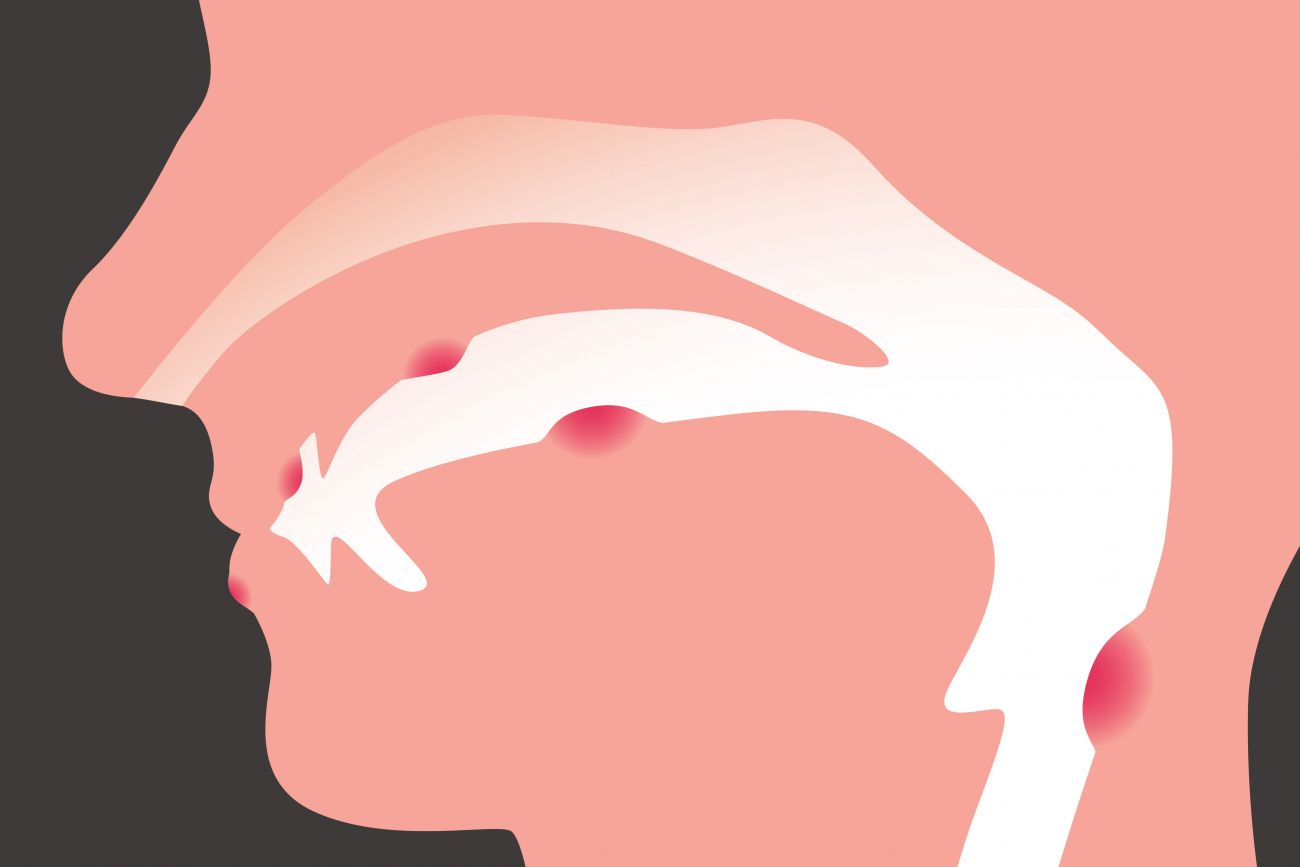April is Oral, Head & Neck Cancer Awareness Month—the perfect time to learn more about your risk factors. Unlike a mammogram, a PSA test, or other routine cancer screenings, oral cancer screening is something most people don’t think to ask about at the doctor’s office. Because oral cancer affects a smaller portion of the population—about 3% of annual cancer cases—many aren’t even aware of the risk factors. Oral cavity cancers are the most common type of head & neck cancer, and tongue cancers are the most common type of oral cancer. More than 25,000 oral/lip cancers are diagnosed in the U.S. every year.
But catching oral cancer early is key to survival. The survival rate for oral cancers diagnosed at a localized stage is about 80%. However, when diagnosed at an advanced stage, the survival rates can be as low as 30%.
Oral Cancer Risk Factors
What are the most common risk factors? Using tobacco of any kind and alcohol abuse can increase your chances of developing oral cancer. A combination of tobacco and alcohol use has been shown to increase the risk of oral cancer by about 30%. Additionally, oral cancer often returns after a first occurrence, so having had oral cancer previously can put you at higher risk of being diagnosed again.
In recent decades, much research has been devoted to the link between the human papillomavirus (HPV) and oral cancer. While HPV is a common virus that is often defeated by a healthy immune system alone, persistent cases of the virus can increase your risk of developing cancerous lesions, particularly on the back of the tongue and tonsils.
Never miss another Cancer Talk blog!
Sign up to receive our monthly Cancer Talk e-newsletter.
Sign up!Signs and Symptoms of Oral Cancer
Regardless of your risk factors or medical history, if you see white or red lesions or patchy spots anywhere in your oral cavity, be vigilant. The oral cavity includes the lips, the front two-thirds of the tongue, the gums, the lining inside the cheeks and lips, the bottom of the mouth under the tongue, the bony roof of the mouth (hard palate), both upper and lower jaw bony ridges, and the small area behind the wisdom teeth. If you or a loved one has a concerning lesion or growth in the oral cavity, you should contact your dentist for an examination, who may recommend further testing or a referral to an oral oncologist.
Paying attention to changes in your body and acting on them quickly can often mean the difference in finding oral cancer, or any disease, in a treatable, manageable state or getting a not-so-desirable prognosis.


